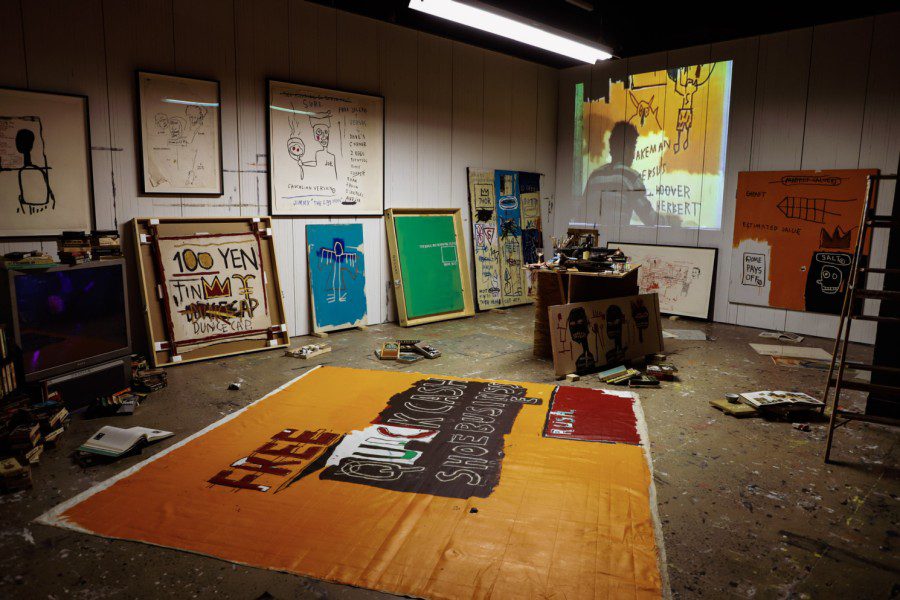‘Jean-Michel Basquiat: King Pleasure’ exhibit offers unseen artistry
Visit the Starrett-Lehigh Building to admire more than 200 previously unseen Basquiat artworks. The exhibit is open through Jan. 1.
(Courtesy photo by Shaye Weaver for Time Out New York)
More than 200 of Jean-Michel Basquiat’s unseen works are currently on display at the Starrett-Lehigh Building. (Courtesy photo by Shaye Weaver for Time Out New York)
November 1, 2022
Jean-Michel Basquiat was a neo-expressionist artist who used striking colors and painted abstract scenes to comment on racism. Working in New York City in the ’80s, Basquiat revolutionized the idea of the Black artist, supported his community and commented on social injustices through his art.
Today, his work continues to receive high praise, as many of the social issues he explored in his work are still prevalent today. That said, much of it has also become commodified due to a rebranding of his intended message.
A majority of the works presented are untitled. These are deeply personal pieces that capture moments from Basquiat’s early life, which allows the viewer to navigate the progression of his artistic expression from childhood into adulthood.
In highlighting Basquiat’s childhood mementos, the display emphasizes family — a crucial part of the artist’s life — particularly through a remarkable 3D model of his home. The decision to share the Basquiat family collection with the public was a difficult one. According to Jeanine Basquiat, Jean-Michel’s sister, “The impetus to do this stemmed from conversations we had that his works needed to be seen. This is not meant to be a scholarly exhibition, but a fresh perspective told from our family’s point of view.”
The exhibition is also a wonderful recreation of Basquiat’s art studio, immersing the audience into what his creative process might have looked like and reminding the viewer of what was important to him. There are moving videos of his sisters, who share stories of their childhood with their brother and the tragedy of his passing at 27, and accounts from cousins and family friends.
The “Jean-Michel Basquiat: King Pleasure” also features Basquiat’s widely recognized crown motif, which represents Basquiat’s view of himself and other Black artists as royalty. Throughout his work, the viewer can spot many of the Black cultural icons he was inspired by.
Much of what he created was a representation of his own subjective exploration, as well as a critique of social issues, including racism. “Irony of Negro Policeman” depicts a hulking, monstrous figure with a mask-like face, which is Basquiat’s perspective of a Black police officer. The figure wears a mask, concealing their identity, and the officer wears a hat that is seemingly brainwashing them. Their expression is purposely intended to frighten the viewer.
The exhibit combines nearly every form of art into a collection honoring a beloved family member and artist. Basquiat, just like many of us, was constantly searching for a better understanding of his identity. The enduring relevance of his social commentary is what keeps many of us attracted to his bold and powerful work.
Contact Kate Serrano at [email protected].


























































































































































